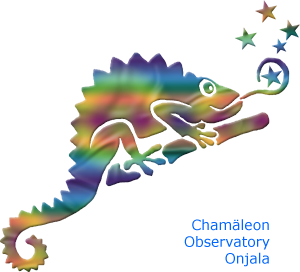 |
Chamäleon Observatory HOME
|
|||||
From ABULFEDA To ZUPUS 170 craters and 85 systems of rilles in 420 high-resolution photographs A photographic lunar atlas with the lunar age between 3.3 and 14.5 days (12 -100 %) |
||||||
| Wolfgang Paech + Franz Hofmann / Last Update: 12.01.2018 / Contact |
 |
This website shows a majority of the
front of the moon at intervals of a moon age from 3.3 to 14.5 days (12 - 100%
illumination) with special reference to common lunar structures like craters,
rilles (grooves), mountains etc. Our lunar atlas
on the topic of lunar volcanism you can
find here. The orientation of the images is different from the modern representations in lunar atlases. They are orientated in the same way as the CCD camera captures the images in the focus of the telescope - SOUTH is up and EAST is LEFT. The image resolution is on average between 1,000 to 2,000 meters, whereas for some images - depending on the lunar distance, the position of the details in viewing direction to the earth and the illumination - it is even under 1,000 meters. The best images show details in the range < 700 meters. Two examples perfectly illustrate the high image resolution: The "Floor Fractured" crater Alphonsus with rilles and pyroclastic volcanism and the two small volcanic structures Isis and Osiris in the Mare Tranquillitatis southwest of the landing area of Apollo 17. |
| < Clavius and Blancanus |
In this pdf file we give a description of the different types of craters, which are shown in the images and which are briefly described in the tables. Whereas in this pdf file you will find detailed descriptions of all special and/or unique lunar structures on this website. You can find individual pdf files - assigned to the respective moon age - at the beginning of the image tables.
| All images are from 2015, taken in the
months of July, August and September. With very few exceptions (September
23rd), the images were taken in the focus of a Celestron C14 (f = 3.900 mm)
with a Celestron SkyRis 445M video module. A Baader IR pass filter was used to
optimize the seeing for all recordings. Location of the telescope were two
guest farms in Namibia: the Onjala Lodge (C 14) near Windhoek and Rooisand
Desert Ranch (17 " PlaneWave) near the Gamsberg. The video streams have been processed with a standard recording method and a standardized image processing mode. The summed images were created with the software AviStack 1.8, the final processing was done in Adobe Photoshop CS 2. The length of the video streams was between 1200 and 1500 frames - depending on the seeing conditions. 12 % of the frames were added to the final image. More information about the technology and specifically the image resolution can be found here. Since the seeing on Onjala is often best roughly 1 hour before sunset, many of the video streams were recorded at this time. This means that the sky was still light. The Baader IR pass filter plays an important role here, because it darkens the background of the sky. Many of the images can thus be regarded as daylight images of the moon. |
 |
 |
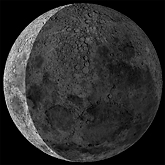 |
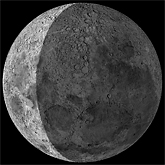 |
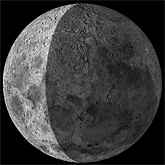 |
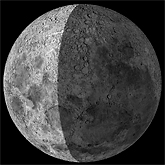 |
 |
| 3.3 d - 12 % | 4.5 d - 17 % | 5.1 d - 22 % | 5.5 d - 25 % | 6.1 d - 30% | 7.1 d - 39 % |
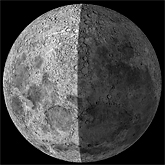 |
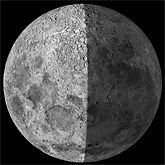 |
 |
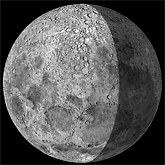 |
 |
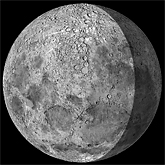 |
| 7.5 d - 44 % | 8.5 d - 54 % | 9.6 d - 64 % | 10.5 d - 75 % | 11.5 d - 84 % | 12.1 d - 87 % |
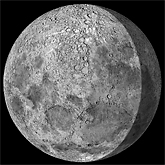 |
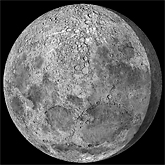 |
 |
The
lunar structures depicted on the individual pages are sorted alphabetically. On
each page there is an image preview for the different regions. Simply click on
the thumbnail to load the larger pictures. There is also a table of the
individual formations with a brief description of the structures. The
corresponding images are linked through the frame number in the first column.
All links open in a separate browser window . Due to the large number of images during the Moon's age of 8.5- , 10.5 and 11.5 days and because the lighting conditions are also slightly different, these pages are divided into two subpages. Simply follow the |
| 12.5 d - 92 % | 13.1 d - 95 % | 14.5 d - 100 % | . |
| Wavelength in nanometer |
Celestron 14, aperture 350mm resolution in arcseconds |
Planewave Astrograph, Öffnung 430mm resolution in arcseconds |
| blue, 400 nm | 0.23 | 0.18 |
| green, 550 nm | 0.31 | 0.25 |
| red, 680 nm | 0.40 | 0.33 |
1 km on the Moon (in the middle of the Moon) corresponds to 0.56" or 1" corresponds to1.8 km. Therefore, 1 pixel in the image corresponds to 375 meters on the Moon (theoretically), practically in the red wavelength region around 750 meters. These theoretical calculated values are strongly valid only for a point light source. The field which is shown in the focus of the Celestron 14 is (slightly) cropped about 5.4 x 4.0 arcmin, corresponding to 324 x 240 arcsec.
 |
Does the practice also correspond to the theory? Here are some Examples of achieved image resolution in practice. |
This is the website with the interactive map of the Moon of the Lunar Reconnaissance Orbiters Team. It provides direct access to any lunar formation, starting with a scale of 4 km per pixel. You can zoom in to a magnification of 64 meters per pixel for the images taken with the wide-angle camera, followed by the image strips of the tele camera where the scale is up to 1 meter per pixel. In addition, you can switch on various overlays like digital elevation models. All images that we have included into this lunar atlas are marked with LRO. General information on this NASA spacecraft can be found here.
At http://www.avistack.de you can download the video image processing program which we have used to process the moon images. It has been programmed by Dr. Michael Theusner and is freeware. See also our page for image processing.
Highly recommended literature and lunar atlases
 |
Charles A. Wood: The Modern Moon: A Personal View, Sky Publishing
Corporation, 2005 Charles A. Wood, Maurice Collins: 21st Century Atlas of the Moon, West Virginia University Press, 2012 Motomaro Shirao, Charles A. Wood: The Kaguya Lunar Atlas: The Moon in High Resolution, Springer, 2011 |
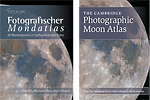 |
W.
Paech, M. Weigand und A. Chu: Fotografischer Mondatlas: 69 Mondregionen in
hochauflösenden Fotos, Oculum, 2010 A. Chu, W. Paech, M. Weigand und S. Dunlop: The Cambridge Photographic Moon Atlas, Cambridge University Press, 2012 |
 |
The
following two publications are pdf-files and free for download. Both - Alan
Chus Photographic Moonbook and K.C. Paus Photographic Lunar Atlas for Moon
Observers - are modern milestones in amateur moon observation. Mr. Chu is also
a member of the Hong Kong Astronomical Society and both are observing from Hong
Kong Alan Chu: Photographic Moonbook (version 3.5, edition 2011, 260 pages) K.C. Pau: Photographic Lunar Atlas for Moon Observers (Second edition 2016, 900 pages) |